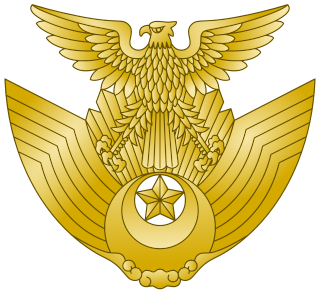
The Korean War was significant in the fact that it was the first war in which the newly independent United States Air Force was involved.

Fukuoka Airport, formerly known as Itazuke Air Base, is an international and domestic airport located 1.6 NM east of Hakata Station in Hakata-ku, Fukuoka, Japan.

Royal Air Force Aldermaston or more simply RAF Aldermaston is a former Royal Air Force station located 8 miles (13 km) east of Newbury, Berkshire and 9.8 miles (15.8 km) southwest of Reading, Berkshire, England.

The 374th Airlift Wing is a unit of the United States Air Force assigned to Fifth Air Force. It is stationed at Yokota Air Base, Japan. It is part of Pacific Air Forces. The 374th Airlift Wing is the only airlift wing in PACAF and provides airlift support to all Department of Defense agencies in the Pacific theater of operation. It also provides transport for people and equipment throughout the Kantō Plain and the Tokyo metropolitan area.
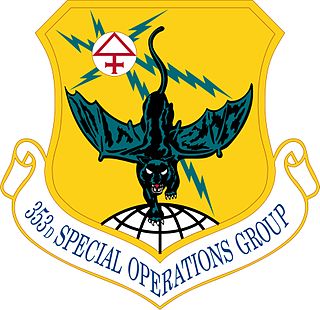
The 353rd Special Operations Group is an operational unit of the United States Air Force Special Operations Command. It is stationed at Kadena Air Base, Japan.

Larson Air Force Base is a former United States Air Force base located five miles (8 km) northwest of the central business district (CBD) of Moses Lake, in Grant County, Washington. After its closure in 1966, the airport facility became Grant County International Airport.

Royal Air Force Station Balderton or more simply RAF Balderton was a former Royal Air Force station located 2.0 miles (3.2 km) south of Newark-on-Trent, sandwiched between the now extinct Great Northern Railway (GNR) Bottesford-Newark line and the A1 road in Nottinghamshire, England.

Royal Air Force Bottesford or more simply RAF Bottesford is a former Royal Air Force station located on the Leicestershire-Lincolnshire county border, 6.8 miles (10.9 km) north west of Grantham, Lincolnshire and 7.6 miles (12.2 km) south of Newark-on-Trent, Nottinghamshire and about 107 miles (172 km) north-northwest of London, England.

The 57th Wing is an operational unit of the United States Air Force Warfare Center, stationed at Nellis Air Force Base, Nevada.
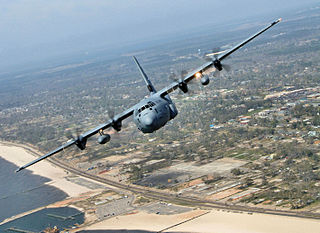
The 403d Wing is a unit of the United States Air Force assigned to the Air Force Reserve Command. It is located at Keesler Air Force Base, Mississippi and employs a military manning authorization of more than 1,400 reservists, including some 250 full-time air reserve technicians. It also controls an active duty associate airlift squadron consisting of active duty regular Air Force personnel integrated into the operations of its reserve airlift squadron.

Iruma Air Base is a Japan Air Self-Defense Force (JASDF) base located in the city of Sayama, Saitama Prefecture, north of western Tokyo, Japan.

Naha Air Base, formally known as the Kōkū Jieitai Naha Kichi (航空自衛隊那覇基地), is an air base of the Japan Air Self-Defense Force formerly under control of the United States Air Force. It is located at Naha Airport on the Oroku Peninsula in Naha, Okinawa, Japan.

The 483d Tactical Airlift Wing was a tactical airlift and composite wing assigned to Pacific Air Forces during the Vietnam War. It was the host organization at Cam Ranh Bay Air Base South Vietnam from 1970–1972.

The 815th Airlift Squadron is a flying unit of the United States Air Force assigned to the Air Force Reserve Command and part of the 403d Wing at Keesler Air Force Base, Mississippi. It operates Lockheed C-130J Hercules aircraft providing global airlift.

The 315th Air Division is an inactive United States Air Force unit. Its last assignment was with Pacific Air Forces, based at Tachikawa Air Base, Japan. It was inactivated in April 1969.

The 75th Troop Carrier Squadron is an inactive United States Air Force unit. It was last assigned to the 316th Troop Carrier Group at Ashiya Air Base, Japan, where it was inactivated on 18 June 1957.
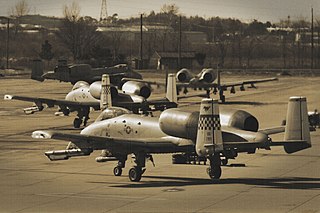
The 51st Operations Group is the operational flying component of the United States Air Force 51st Fighter Wing, stationed at Osan Air Base, South Korea.

The 374th Operations Group is the operational flying component of the United States Air Force 374th Airlift Wing. It is stationed at Yokota Air Base, Japan.
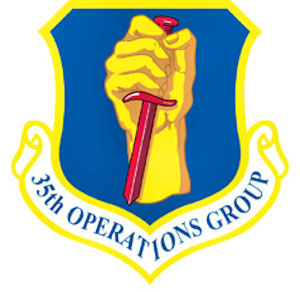
The 35th Operations Group is the operational flying component of the United States Air Force 35th Fighter Wing. It is stationed at Misawa Air Base, Japan, and is a part of Pacific Air Forces (PACAF).

The 483d Airlift Group is an inactive unit last assigned to Pacific Air Forces at Osan AB Korea. It was assigned to Twenty-Second Air Force as a VIP transport unit for Headquarters, Seventh Air Force. It was inactivated on 1 June 1992.


